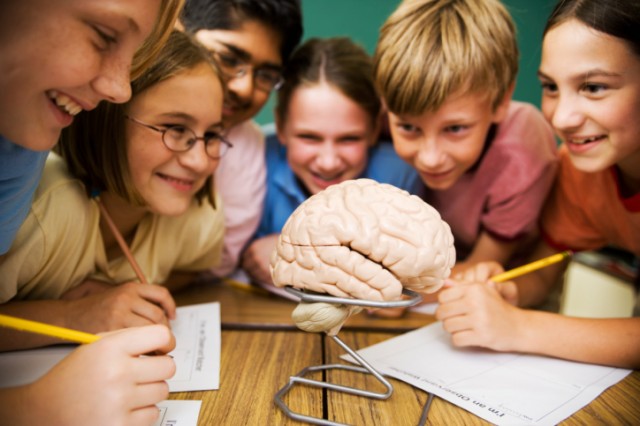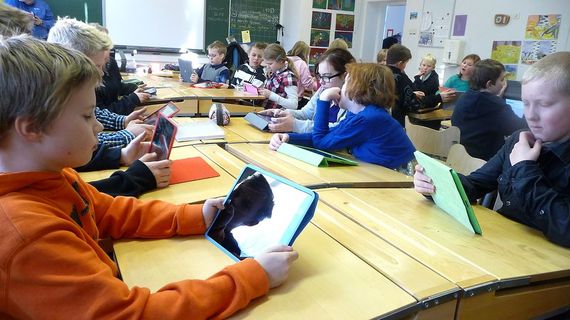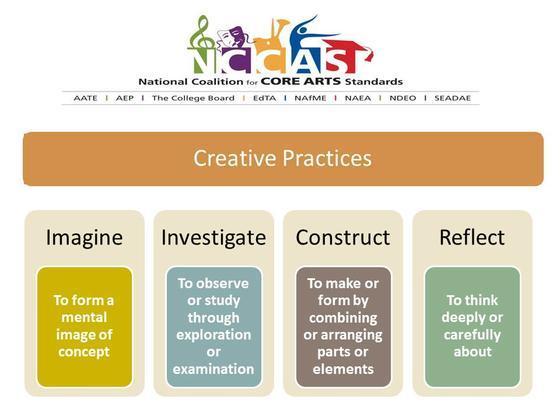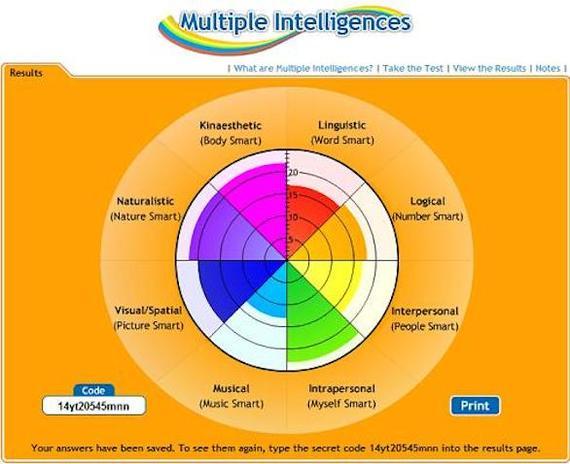Finland and the Common Core

All right, it's not the Common Core per se, but it sure looks like it. And it helps confirm what most people in the U.S. are saying about the Common Core: "This could be the holy grail of education reform."
Finland changes its National Core Curriculum (NCC) every few years. While teachers and even students and their parents may want to see other changes made, the process is coming to a close.
For a nation that ranks at the top of the so-called PISA tests (for Program for International Student Assessment) administered by the Organization for Economic and Cooperative Development (OECD) to 15-year-olds every three years, the changes Finland proposes are confusing to many but seen as absolutely necessary by administrators and government executives in the education ministry.
According to Liisa Pohjolainen, who is in charge of youth and adult education in Helsinki, the capital city at the forefront of the reform program, "This is going to be a big change in education in Finland that we're just beginning."
What they propose is scrapping traditional "teaching by subject" in favor of "teaching by topic." There is no math, history or biology per se. Instead of teaching specific disciplines, teaching will be interdisciplinary and real-world. Richard Garner, the education editor of the Independent in England, put it this way:
Pupils would be taught cross-subject topics such as the European Union -- which would merge elements of economics, history (of the countries involved), languages and geography... [Or using] a map of continental Europe on the whiteboard ... the children must combine weather conditions with the different countries displayed on the board. For instance, today it is sunny in Finland and foggy in Denmark. This means the pupils combine the learning of English with geography.
The reason that Finland is moving in this radical direction is why so many states have adopted the Common Core, also known as the "state standards initiative." While we have been watching Finland, which produces what author Amanda Ripley calls "The Smartest Kids in the World," maybe the Finns have been watching us. The Common Core, for example, "proposes that educators engage students in inquiry and exploration of real world problems and interdisciplinary performance tasks." That's exactly what Finland wants too.
The Common Core is like Finland's National Curriculum Core (NCC) plan. It opens the door to integrating all the disciplines, merging art and science, and fashioning an interdisciplinary curriculum that enhances the thinking skills young people most need.
Clearly, this effort here and there is not going to be easy. Most teachers have been teaching single subjects for many years. This new methodology requires collaboration in course planning, team teaching and individual assessment of student outcomes.
The students will need to work in groups, participate in the problem solving, and be ready and accountable for what they contribute to their learning. They will be assessed individually too.
It is critical that we look at "how students learn." As Howard Gardner has written, some people are more verbal-linguistic, some more spatial, and some more logical, and the list continues. And now, after 30 or so years, this is more widely accepted. Under the Common Core approach to teaching and learning, it will be commonplace.
To date this has not yet been widely applied in the schools. There is simply no longer any reason to deny Gardiner's assertion that we all have "multiple intelligences" and, for our students, begin to craft learning methods that recognize the different learning styles and the need for more tailored individual learning methods.
The Common Core also eliminates the silos in education by requiring interdisciplinary, real-word problems to solve.
The new global, knowledge economy is calling for radical change in education. This is radical indeed. But as the National Governors Association (NGA) Center and the Council of Chief State School Officers (CCSSO) have pointed out, "Today's students are preparing to enter a world in which colleges and businesses are demanding more than ever before."
There is no alternative.Finland and the Common Core | John M. Eger:
How a Finnish Experiment Could Mean Better Education in America
The U.S. education system is fast beginning to resemble a decrepit (and worthless) financial derivative.
Noted venture capitalist Peter Thiel referred to the higher education system as the next bubble. And student loans are expected to be the next big default in the financial markets.
Part of the problem with the system’s returns is its emphasis on academic rigor at the expense of practical training. This approach does not necessarily translate into financial or career success later in life.
The American education industry could learn a few things from its Finnish counterpart. The Nordic state, which is regularly among the top scorers in student assessment indexes, is transforming its educational pedagogy from a subject-based curriculum to a topic-based one.
The new system, which is currently being tested, combines vocational training with humanities to ready children for the job market. According to capital city Helsinki’s development manager, the changes are “necessary for industry and modern society.”
The new Finnish education system emphasizes an interdisciplinary approach to education. For example, students in the catering service industry are taught a mix of subjects such as English and math along with vocational skills related to catering. Similarly, English and geography are combined into a single subject.
Thus, it combines the practicality of a vocational approach with cross-functional expertise. According to Finnish authorities, outcomes for students in the new system have improved.
It is not hard to see why.
The system has multiple benefits. For starters, student grades will be a true reflection of their soft skills and hard skills. As an example, students who graduate from the catering service course will have a mix of communication and vocational skills (such as culinary expertise) necessary for their job.

Your Reaction?
Source: Thinkstock
This is unlike a subject-based approach, which emphasizes academic rigor over practical experience. In this case, academic grades determine the all-too-important internships, which are seen as gateways to the good jobs. This adds to the time and resources spent by a society to hone productive citizens. The new system enables graduates of the new system to become productive immediately after joining the workforce.
This will have a positive impact on the nation’s economy, because a country’s economy is only as good as its citizen’s productivity and skill sets. For example, a focus on humanities-centered education in American academia has reduced the value of a humanities degree. At the other end of spectrum, it has created a mismatch in the supply and demand for technology workers.
More conclusive proof about the effect of worker skill sets can be found in a European Union study, which evaluated the effect of vocational skill sets on an economy. According to the study, better-skilled employees at intermediate and lower levels of organization allow senior managers and professional staff to think strategically and do their own jobs well rather than engage in “fire-fighting.”
In simple words, a good employee is a productive employee. The study further states that the context in which skills are developed is important in determining the ultimate effect of skills on productivity. Thus, academic study of a subject — such as catering services — is useless without practical experience in a workplace setting. With their emphasis on academic rigor, current education systems are not suited for a productive economy.
Philosophy and practice
Indeed, the case for a good education system is as much a philosophical one as a business one. An educated workforce is important for scientific progress and is important to construct a tolerant, civilized, and humane society.
Estimated to be worth approximately $1.3 trillion, the American education industry is a complex network of personal tutoring agencies, public institutions, and a thriving textbook market. The entire juggernaut is founded on preparing youngsters for viable jobs in a nation’s economy.
But there has been a disconnect between its promised and actual returns in recent times. Education is an investment made by individuals. A good degree gets you a good job and, consequently, a good income. Similarly, graduation from a top-tier university multiplies networking opportunities.
A spiral of high fees coupled with rising unemployment among millennials and structural changes in the economy have made that investment unsustainable, however.
That is only part of the problem.
Other problems, such as individual statewide initiatives and standards to measure academic performance, further complicate matters. While the common core standards unify individual frameworks under a single umbrella, they are still focused on piecemeal subject-based academic rigor.
As societies become a complex mesh of economic and global factors, a subject-specific approach is not well-suited to preparing students for a labor market that is increasingly international and interdisciplinary rather than local or limited to a single field.
For example, the career prospects for technology workers are already bright. But an increasingly technology-obsessed society makes context necessary for development of products and services using technology.
If successful, the Finnish education reform might provide pointers to America’s education czars on how to make the financial investment worth it.http://www.cheatsheet.com/business/how-a-finnish-experiment-could-mean-better-education-in-america.html/?a=viewall



